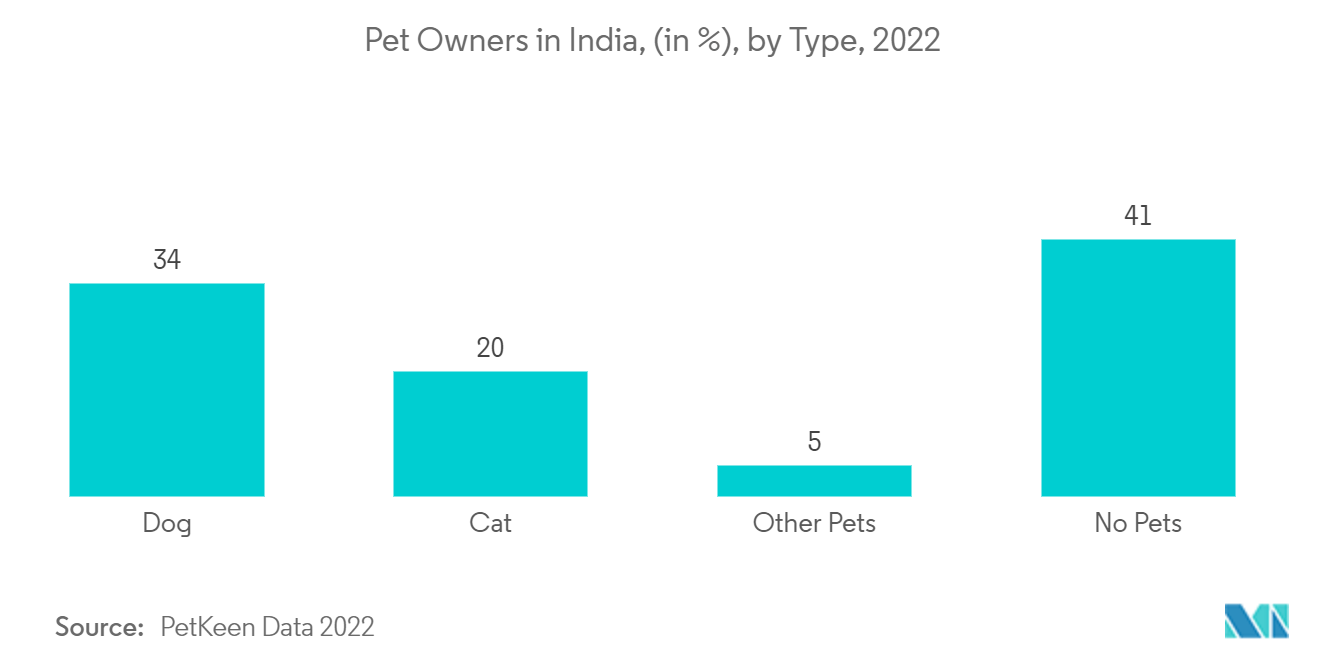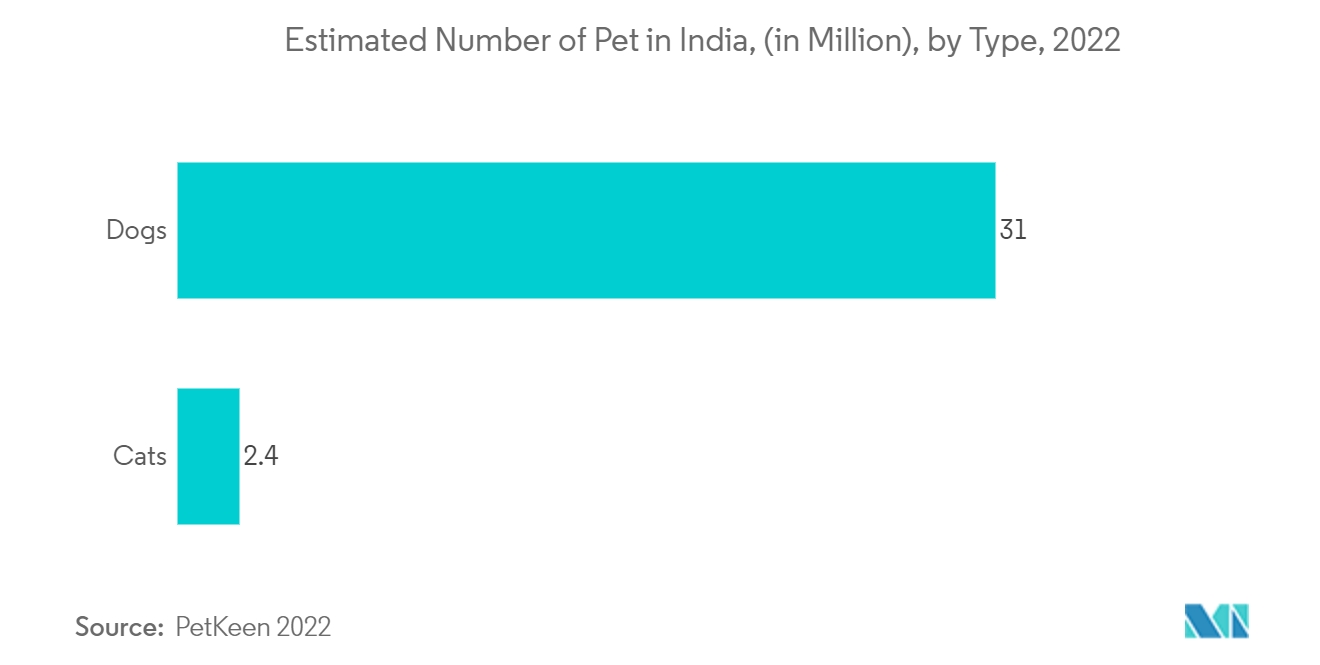Market Trends of India Veterinary Healthcare Industry
This section covers the major market trends shaping the India Veterinary Healthcare Market according to our research experts:
The Vaccine Segment is Expected to Have the Highest Growth Rate Over the Forecast Period
Vaccines are comprised of viruses, bacteria, or other disease-causing organisms that have been killed or altered so that they cannot cause any disease, thus, boosting immunity. Vaccines are being manufactured that contain genetically engineered components derived from those disease agents. The vaccines segment is expected to be driven by innovations in vaccines, growing awareness of animal health, increasing investments by government bodies and associations, increasing demand for animal protein, including milk, meat, eggs, and fish, and rising healthcare expenditure for companion animals.
In May 2021, Hyderabad-based Indian Immunologicals Limited (IIL) launched Raksha Class, a classical swine fever (CSF) vaccine, which is a unique cell culture technology-based vaccine for pigs, developed in collaboration with the Indian Veterinary Research Institute (IVRI), Bareilly. Additionally, there has been increasing use of technology in veterinary vaccines in India. For instance, in November 2022, Noida based startup named Tech Eagle became the world's first company to deliver vaccines to the animal husbandry department of Arunachal Pradesh with the help of a drone. Hence, with such launches in the Indian market, the segment is expected to witness strong growth.
Furthermore, in June 2022, Agriculture Minister Narendra Singh Tomar on Thursday launched the country's first homegrown COVID-19 vaccine Anocovax for animals, developed by Haryana-based ICAR-National Research Centre on Equines (NRC). The immunity induced by Anocovax neutralizes both Delta and Omicron variants of SARS-CoV-2. Hence, with such advancements in veterinary vaccines across the country, the segment is expected to witness strong growth in the future.

Increasing Pet Adoption in India is Expected to Propel the Market Growth in Coming Years
The major factor contributing to the growth of the market studied in India is the increasing pet adoption and the rising number of animals getting injured with pain and inflammatory diseases. For instance, as per the Bark India Charitable Trust, dogs and cats are the most common animals that the team has been saving since it began its project. The crew saved 82 animals in June 2022, 10 of whom received surgery before being maintained for adoption, and in August 2022, 107 sick and injured animals were rescued. Hence, the surgeries on animals increase the need for veterinary products that help the market grow in the forecast period.
As per the data from PetKeen published in August 2022, dogs are the most common pet in India, with around 34% of pet owners having a dog, whereas 20% have cats. Furthermore, the same data indicated that around 60% of people in India have a pet, with over 10 million pet dogs in the country. Despite the comparatively low adoption of cats in the country, it is estimated that by the year 2023, the number of pet cats in India will reach around 2.4 million. Hence, the statistics mentioned above indicate that there is a high rate of pet adoption in the country, which is fueling the market for veterinary healthcare in India.
Furthermore, the increased awareness of animal healthcare and pain management products in the nation is expected to drive the market. For instance, as per the data by Pashudhan Praharee published in March 2022, in the treatment of companion animals, licensed veterinary NSAIDs are used to manage the discomfort and swelling brought on by osteoarthritis in dogs and horses. The data also stated the level of knowledge about NSAIDS treatment on animals, including side effects, contraindications, and risks associated with NSAIDs in companion animals. Therefore, with the increasing use of NSAIDs in veterinary practice, the market studied is expected to witness strong growth in the coming years.


